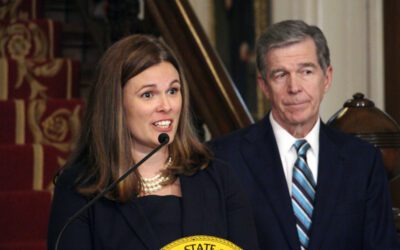
Transit Equity Day is celebrated on civil rights icon Rosa Parks' birthday. (Photo: National Park Service)
Systemic racism has many tentacles. On Rosa Parks’ birthday, we remember how access to public transit has been denied to many Black communities. It’s still an issue today.
[Editor’s Note: The following is written by a representative of the NC A. Philip Randolph Educational Fund, Inc., which was organized to advocate for economically disadvantaged families.]
Every year, on Rosa Parks’ birthday, we celebrate Transit Equity Day. Parks, of course, made history when she refused to give up her seat to a white person, sparking the start of the Montgomery Bus Boycott, and spurring change that improved transportation access for Black people around the country. In honor of Rosa Parks, Transit Equality Day highlights transit as a civil rights, climate justice, and workers’ rights issue.
Transit equity is a civil rights issue because America’s long history of systemic racism, manifested via disinvestment in public infrastructure within communities of color, and policies such as redlining and urban renewal, has led to subpar access to public transit in these communities.
Read More: 10 events, 29 days: How to celebrate Black History Month in NC
In many urban areas, transit systems do not adequately serve communities of color because of insufficient coverage or infrequent service. This limited accessibility can make it difficult for residents to get to work, school, the doctor’s office, and other essential destinations. Even when public transit options are available in communities of color, they often suffer from poor service quality, including older, less reliable vehicles, longer wait times, and overcrowded conditions.
Transit equity is a climate justice issue because unequal access to cleaner vehicles means disparate impact on the environment and public health in these communities. That is to say, the use of electric vehicles, including electric buses, contributes to significantly lower levels of air pollutants than their gas counterparts, which in turn leads to cleaner air and a healthier environment, especially in urban areas where buses frequently operate.
The ICF has found that “increasing the number of EVs on the road can significantly improve air quality and health, particularly for disadvantaged communities. These highway-adjacent communities, disproportionately affected by tailpipe emissions, will be exposed to less air pollution as the nation transitions to zero-emission vehicles.” This is especially important for children, the elderly, and individuals with pre-existing health conditions, who are more vulnerable to polluted air.
In particular, greater use of electric vehicles can reduce rates of respiratory and cardiovascular diseases, which are exacerbated by air pollution.
The ICF also mentioned: “Although disadvantaged communities could experience greater benefits by increasing the number of electrical vehicles on the road, they often face increased barriers to EV adoption, including high upfront costs and limited access to charging stations. To help ensure that opportunities for increased EV adoption reach communities which can benefit from them the most, it is important that transportation agencies prioritize community awareness and develop incentives that consider the community’s context, culture, and needs.” This can help break the systemic racism tied to public transportation.
And finally, transit equity is about workers’ rights because we need jobs within the transit sector to be accessible to a diverse workforce. This means equitable hiring practices and opportunities for training and advancement for all workers and also includes fair wages, safe working conditions, reasonable work hours, and benefits for transit employees. Ensuring these rights contributes to a more stable and efficient transit system.
It’s clear that transit equity is a civil rights, climate justice, and workers’ rights issue. This Transit Equity Day, I challenge you to get involved in making transportation access more equitable in your community.

5 creepy things you never knew about North Carolina
These lesser-known facts and stories about North Carolina will make your hair stand on end. Learning more about the state you live in is never a...

The real ballad of Frankie Silver, one of the first women executed in North Carolina
Frankie Silver is believed to be the first white woman executed in North Carolina. Here’s the real story of what happened to her back in the 1830s....

5 unsung films that dramatize America’s rich labor history
By Peter Dreier, Occidental College The U.S. is in the midst of a new upsurge of union organizing. Is a Hollywood drama about angry Starbucks...

5 unsung films that dramatize America’s rich labor history
By Peter Dreier, Occidental College The U.S. is in the midst of a new upsurge of union organizing. Is a Hollywood drama about angry Starbucks...

The real founding fathers of NC: 4 Indigenous tribes that came first
Several indigenous tribes have always inhabited present-day NC. Let's take a look at four of them. Native American tribes have inhabited present-day...








